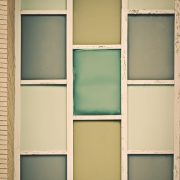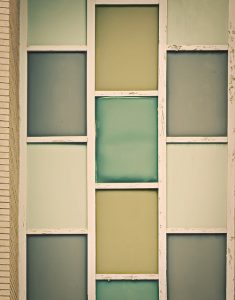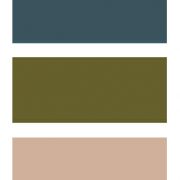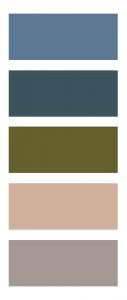Permanent window paint and other crazy ideas
Where you might want to use permanent window paint
Not too long ago, I was in a hotel room in the financial district of Toronto. The original building opened in 1914 as a bank. In 2006, a group of investors added a condominium tower, which wedges between the old building and its former neighbor. My room was in the original building. One of the windows had a great, close-up view of the new building, and nothing else.
The hotel used permanent window paint to disguise the unpleasant view from the window. The painted window still admitted light, but I didn’t have to look at the condo tower. More importantly, the people in the condo tower didn’t have to look at me!
Permanent window paint is a great solution for applications where you’d install frosted glass. The good part about permanent window paint is that it’s actually less expensive than true frosted glass. It’s also easy to apply. Because the permanent window paint is – well – permanent, there’s no need for ongoing paint maintenance. That’s an added bonus when the window is on the 8th floor!
Permanent window paint is an ideal solution for your bathroom, especially if the builder neglected to install a frosted glass window. It’s also a good solution for “pebbled” glass, which some builders substitute for frosted glass.
Pebbled glass is textured on one side. It’s virtually impossible to see out of a pebbled glass window. That might leave you with the (false) impression that it’s likewise impossible to see into a pebbled glass window. Unfortunately, the smooth side of a pebbled glass window can be pretty revealing. To ensure privacy with pebbled glass, paint the smooth side with permanent window paint. Problem solved!
If you’d like more information about permanent window paint, please visit the rest of our site. To place an order for Glassprimer™ glass paint, please visit our online store at http://www.glasspaint.com
Photo Credit: Duncan Rawlinson, via Flickr










